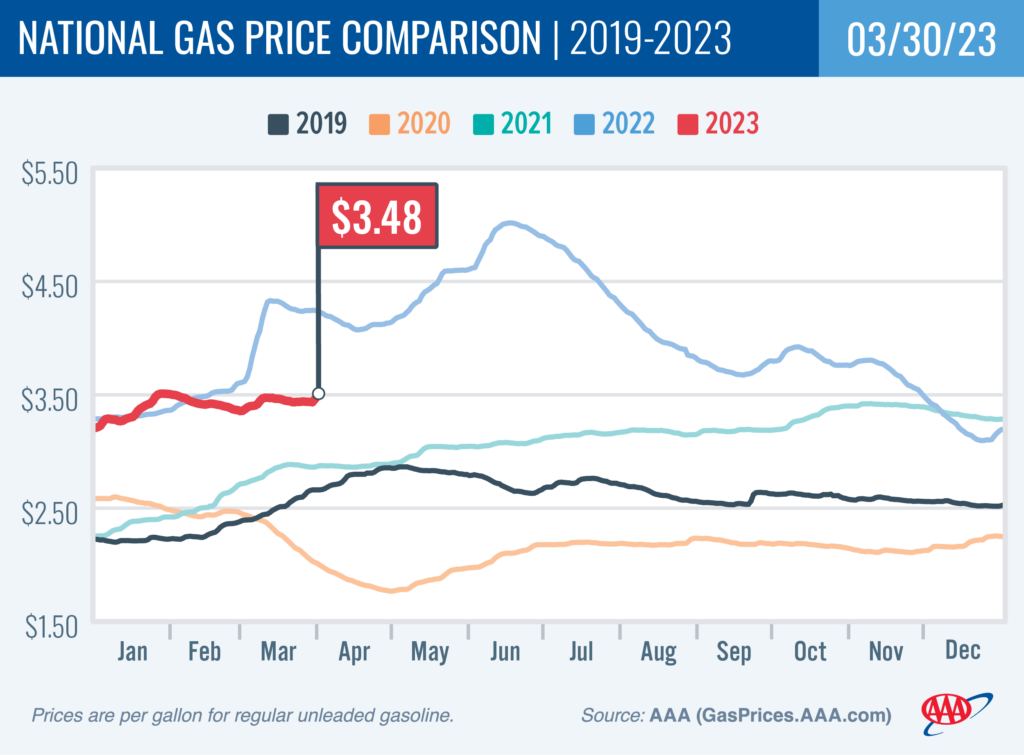Gas prices continue to rise across the country, with the national average for a gallon of regular gasoline reaching $3.48, a nickel increase from last week. Increased demand for gasoline and rising oil prices are cited as the primary factors driving the recent uptick in prices.
The Energy Information Administration’s (EIA) new data shows that demand for gasoline rose from 8.96 million to 9.15 million b/d last week, while total domestic gasoline stocks fell by 2.9 million bbl to 226.7 million bbl. This has led to tighter supply and higher prices. If demand continues to increase, prices at the pump will likely follow suit.
The current national average of $3.48 is 13 cents more than a month ago but 75 cents less than a year ago. Indiana (+15 cents), Ohio (+14 cents), Delaware (+12 cents), Iowa (+12 cents), Kentucky (+12 cents), Illinois (+11 cents), Michigan (+11 cents), Arizona (+10 cents), and Texas (+9 cents) have seen the most significant changes in gas prices since last Thursday.

The top 10 least expensive markets in the US are Mississippi ($3.01), Arkansas ($3.06), Oklahoma ($3.06), Kansas ($3.06), Missouri ($3.10), Alabama ($3.14), South Carolina ($3.15), Louisiana ($3.15), Texas ($3.15), and Montana ($3.19).
At the close of Wednesday’s formal trading session, WTI settled at $72.97, with a decline of 23 cents. Oil prices decreased slightly on Wednesday due to concerns about oversupply as demand for oil continues to rise. The EIA also reported that total domestic commercial crude inventories fell by 7.5 million bbl to 473.7 million bbl last week.
“Oil prices finally crested and have now settled above the $70 per barrel mark after weeks of hovering just below it,” said Andrew Gross, AAA spokesperson. “Gas demand is very robust, and these two factors will cause drivers to see prices increase for now.”

